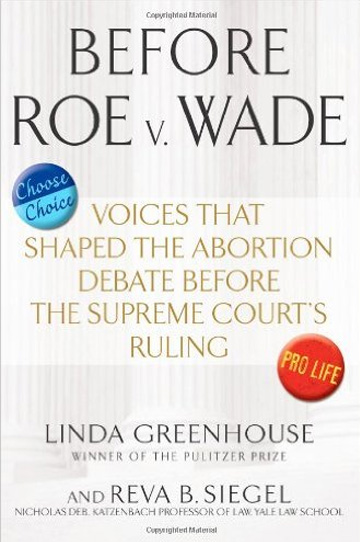
The Early Abortion Wars
June 18, 2010 | Salon, The Barnes & Noble Review
Abortion partisans tend to date the onset of war to 1973, when the Supreme Court held that a Texas statute banning most abortions was unconstitutional. Before Roe v. Wade reminds us that the national debate over abortion was not only under way in 1973, but voices were already growing hoarse. Editors Linda Greenhouse, a journalist, and Reva Siegel, a law professor, make this point in perhaps the only broadly palatable way, given the toxic subject matter: by presenting dozens of primary sources from both sides of the debate in the 1960s and early ’70s. Church circulars, legal briefs, rousing speeches, and open letters fill this useful volume, which largely refrains from editorializing, although Greenhouse and Siegel do note that they are both pro-choice.
The most historically useful selections come early in the book and highlight the simple plight of the woman in trouble, who, unwed, risked becoming a social outcast if she carried the pregnancy to term, and death if she hired a cash abortionist. Equally striking is the defense brief in Roe itself, which offers a sober, emotionally neutral description of a fetus’s development, week by week, that is bound to give pause to even the committed pro-choicer. On the political front, Greenhouse and Siegel mark the first use of abortion as a wedge issue in 1972, when the Nixon administration prompted a mass defection of Catholics from the Democratic Party through single-issue voting. Ever since, half the country has been unable to speak to the other half about the issue without spitting or throwing things.
The editors could have presented more material on the legal and constitutional issues surrounding Roe, which is a controversial decision among lawyers and jurists that raises questions quite apart from the merits of the pro-life/pro-choice debate. Abortion is not mentioned in the Constitution, nor is the underlying right to privacy — a right that stems not from the specific guarantees of the Bill of Rights but from “penumbras” and “emanations” that surround those guarantees, giving them “life and substance.” That at least is the eyebrow-raising explanation of Justice William Douglas in Griswold v. Connecticut (1965), a case that paved the way for Roe by banning states’ restrictions on contraceptives. Whether it is analytically sound is fiercely disputed. Expect the Senate Judiciary Committee to ask Elena Kagan her opinion — for, if abortion at the Supreme Court has a history, it unquestionably has a future, too.